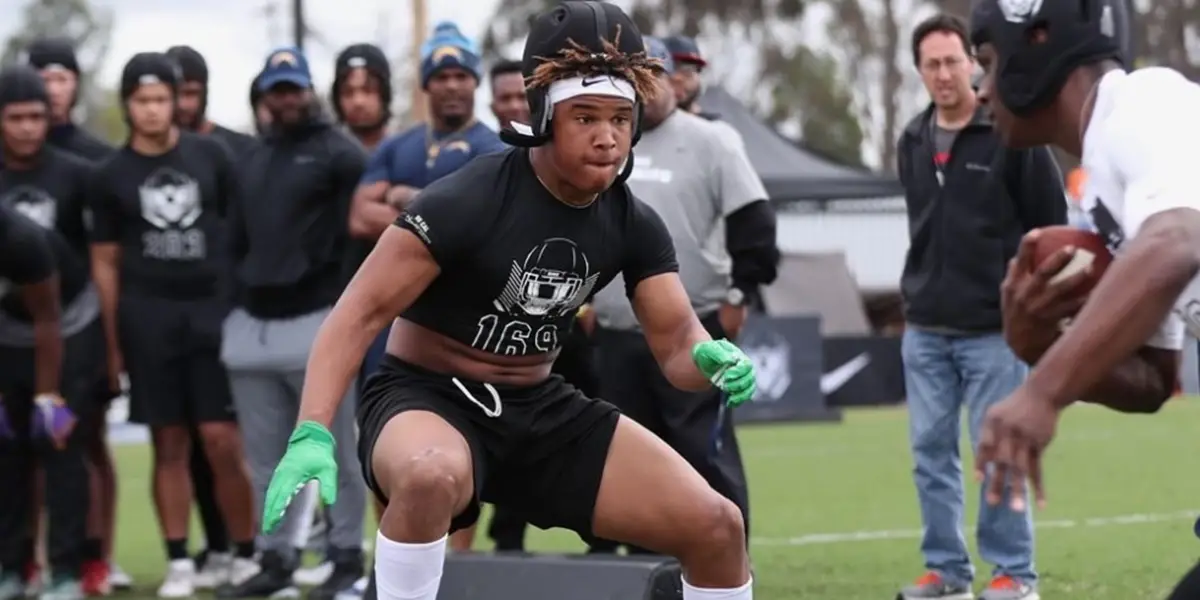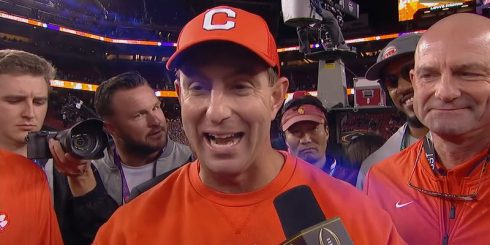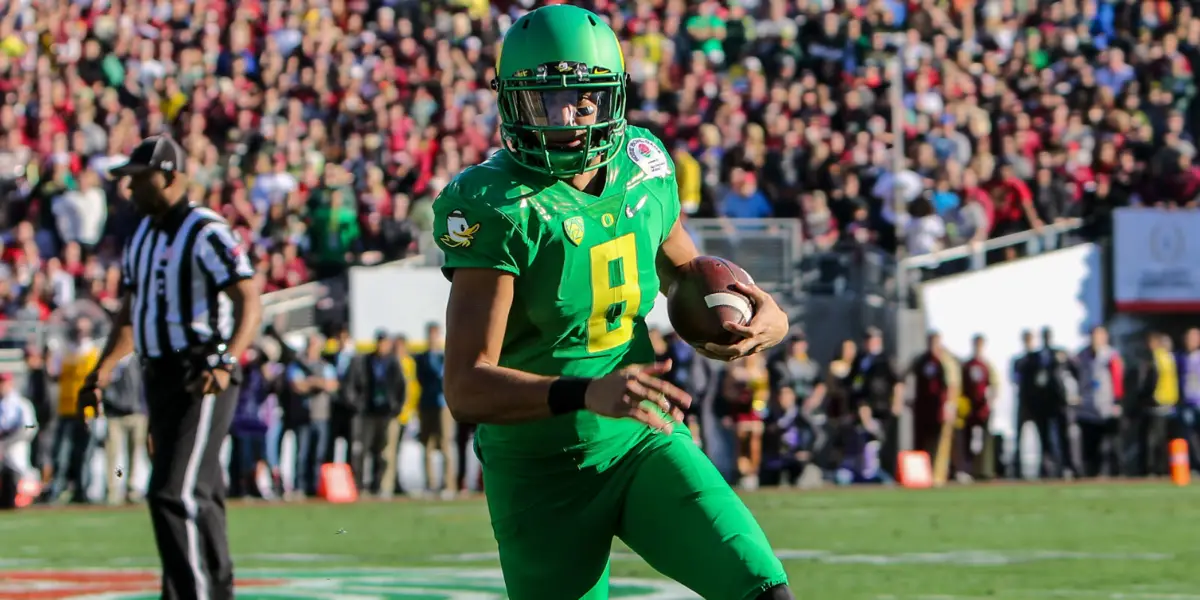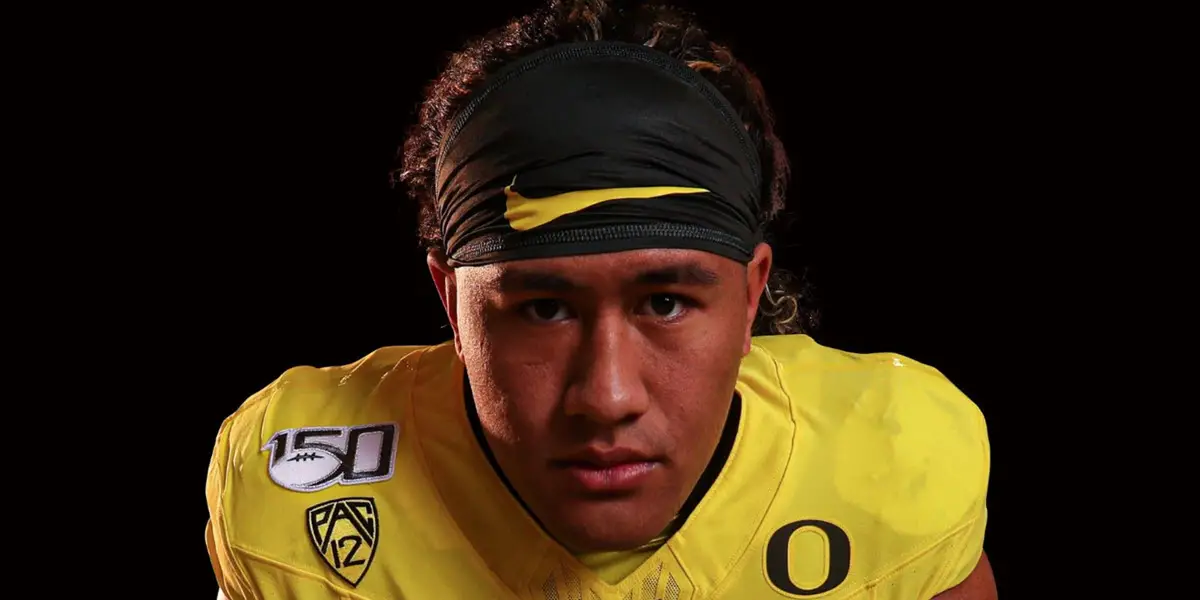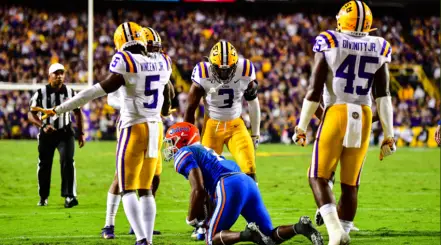“Playoffs! Playoffs?” — Mora, The Elder
College football Playoff (CFP) appearances and titles go hand-in-hand with recruiting results. When Clemson Dabo-Dabo-Do’ed and won its first title in 2016, its recruiting classes from 2013 to the year of that first CFP Championship averaged 15th in the country. This average, when compared to the classes other CFP title winning teams, is a recruiting anomaly. I repeat, anamoly.
When we look at the average recruiting class rankings from CFP winners’ title season and the three previous seasons, a trend emerges. CFP title winners Ohio State (sigh), the subsequent Clemson title teams, Alabama and LSU all had rosters built from recruiting classes that averaged well inside the top 10. Four of the six CFP winners’ recruiting classes averaged inside the top 5.
Dabo Swinney‘s 2013 recruing class was his lowest rated class to play for a CFP championship. What made this class an anomaly, though, was that it finished with a 96% “hit rate,” as calculated by The Athletic‘s, Max Olsen. This means that 96% of the guys Clemson signed in 2013 went on to start for the Tigers for at least one season. That’s an extraordinary result that speaks to Dabo’s ability to find quality players, keep them at Clemson and keep them academically eligible and out of trouble. That’s before Clemson began to routinely pull in 5-star recruits each year.
Oregon, the “Recruiting Outlier”
Since the inception of the BCS in 1998, followed by the CFP in 2014, Oregon is the only “recruiting outlier” to have played for both a BCS and CFP title without recruiting classes that average in the top 10. That’s one heck of an accomplishment for any school, let alone a Left Coast school. To date, after six seasons of the CFP, the two Power 5 conferences west of the Mississippi, the Big 12 and the Pac-12, have a combined CFP record of 1-6. In the six CFP seasons, the Pac-12 is 1-2. Oklahoma is 0-4.
Thank you, Marcus Mariota, for helping Jimbo and Jameis (along with an SEC ref) slip on a banana peel. But man, that Rose Bowl beat down of FSU seems like a long time past, doesn’t it? Since Ohio State’s inaugural CFP win, Playoff titles have been the property of a hegemony headquartered in the southeastern part of these United States.
As the Mercury News and Pac-12 Hotline sports writer, Jon Wilner, recently noted: “Recruiting? It’s a big business within a giant business in an, um, amateur sport.”
It’s All About the Money
Wilner also notes that Pac-12 schools’ football recruiting budgets usually come in at far less than that of the top B1G and SEC (and Oklahoma and Texas) schools. Ohio State has ten full-time employees and six unpaid student assistants dedicated to recruiting. Utah has one full-time employee helping Coach Kyle Whittingham.
Clemson, Ohio State and the top drawer SEC teams, Alabama, Auburn, Florida, Georgia and Texas A+M and the recently not-so-top-drawer, Tennessee, all spend $10 million a year plus on recruiting. So do Oklahoma and Texas.
This is the final Rivals 2020 Recruiting Rankings:
- Georgia
- Clemson
- Alabama
- LSU
- Ohio State
- Texas A+M
- Tennessee
- Florida
- OREGON!
- Auburn
“All right boys and girls, put your thinking caps on. Now, which one of the above does not belong?” — Ms. Finebaum, 1st grade teacher, Birmingham, Alabama.
If you are following along with Ms. Finebaum, students, you will note that one half of the SEC in 2020, finished in the top 10. This is today’s rule, not an exception.
Here’s how the rest of The Conference of Champions finished in the 2020 recruiting cycle: 19–Stanford; 20–UW; 26–ASU; 30–Utah; 32–CU; 34–Cal; 36–UCLA; 51–Oregon State; 55–Washington State; 56–Arizona and 65–USC! The Trojans finished behind Vanderbilt, East Carolina and Tulane, among many others.
If the Pac-12 wants to get in the CFP mix, conference teams other than the Ducks best step up their recruiting! However, saddled with a junior varsity TV network compared to those of the ACC, B1G and SEC, with late kickoff times and with the conference negotiating its new media deal(s) a year after the B1G and the SEC … will they? Or can they?
As the above cited Jon Wilner notes, post 2026, every member school in the B1G and SEC is expected to receive a distribution of $60 million plus a season. Pac-12 teams will get $30 million plus. The Big 12? $35 to $40 million. (This is due to the Big 12 having 10 member schools. In addition, Texas gets a $15 million a year bump from the LHN Network. And Oklahoma owns its tier-two and three media rights and brings in more money per year than every Big 12 member school other than Texas.)
SEC vs Pac-12 Matchups
We all know that the Pac-12 is not going to schedule only cream puffs out-of-conference or return to an 8-game conference slate. We may not win titles, but we do Man Up! This, and $5 at Starbucks, will buy Larry a large latte.
The following are the match-ups the Pac-12 has scheduled, to date, with the SEC through 2030.
Arizona — Mississippi State, home and home (H+H.)
ASU — H+H with, by the order of opponents, Mississippi State, Texas A+M, Florida and LSU. (Holy Herm!) (I expect all Gators players and coaches will need a tutorial on how to fasten a seat belt and raise a tray table?)
Cal — Auburn, Florida (and a one-off at Notre Dame in 2022.)
CU — A+M, Missouri, Florida
Oregon — Georgia (Atlanta)
Oregon State — Ole Miss
Stanford — Two H+H series scheduled with Vanderbilt (Smarty vs Smarty and smart scheduling by The Cardinal.)
UCLA — LSU, Georgia, Auburn (Some big games Bruin, Chipper.)
USC — Alabama (Arlington)
Utah — Florida, Arkansas (Finally, a Hogs sighting!)
2030 (or before) may well find this greybeard at that Pig Skin Party in the sky. But if I knew I was going to still be shuffling on this mortal coil in 2030 … and if recruiting does not pick up in the Conference of Champions … I’d find a place to wager and I’d place more than a bob and quid on the Pac-12. Picking, of course, the total games Under.
Jon Joseph
Georgetown, TXTop Photo From Twitter
 Andrew Mueller, the FishDuck.com Volunteer Editor for this article, works in digital marketing in Chicago, Illinois.
Andrew Mueller, the FishDuck.com Volunteer Editor for this article, works in digital marketing in Chicago, Illinois.
Related Articles:
Oregon Enters Playoffs Better Off Than Last Year
Will The Coaching Carousel Kill Oregon's CFP Chances?
The Playoff Formula Hasn't Changed
Oregon Aims to Bury Dawgs, Punch Playoff Ticket in Rivalry Clash
Huskies Are the New Beavers, Stay In Your Lane Kiffin, and the Civil Apple Cup War
Oregon Football: The X-Factor Vs. Washington

Jon Joseph grew up in Boston, Massachusetts but has been blessed to have lived long enough in the west to have exorcised all east coast bias. He played football in college and has passionately followed the game for seven decades. A retired corporate attorney Jon has lectured across the country and published numerous articles on banking and gaming law. Now a resident of Aiken South Carolina, Jon follows college football across the nation with a focus on the Conference of Champions and the Ducks.

